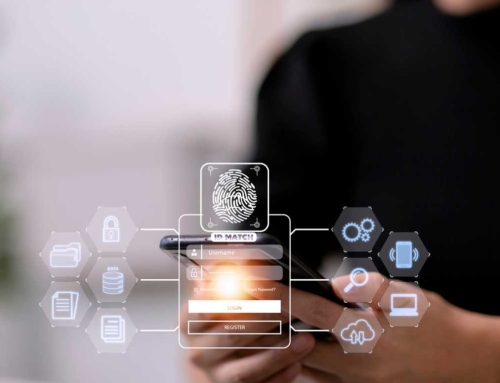How to Secure Endpoints in a BYOD Environment
Why BYOD Security Matters
In today’s fast-moving business world, Bring Your Own Device (BYOD) policies are no longer just a trend—they’re the norm. Allowing employees to use personal laptops, smartphones, and tablets for work can boost productivity, improve responsiveness, and offer greater work-life balance. But with these benefits come serious security considerations. Each personal device connected to the corporate network becomes a potential entry point for cyber threats, making endpoint security a critical priority.
Understanding the Risks of BYOD
While BYOD offers flexibility, it also introduces unique risks:
-
Data breaches when devices are lost, stolen, or compromised.
-
Unauthorized access to sensitive systems and information.
-
Shadow IT—unapproved apps or services that bypass IT controls.
-
Regulatory non-compliance due to uncontrolled data flow.
These risks are amplified because personal devices often lack the same level of control, monitoring, and patching as corporate-owned assets. Without a well-defined endpoint security strategy, organizations can quickly find themselves vulnerable.
Core Strategies for Securing BYOD Endpoints
1. Establish Clear BYOD Policies
The foundation of BYOD security is a comprehensive policy that defines:
-
Acceptable device types and usage.
-
Required security configurations (e.g., passcodes, encryption).
-
Employee responsibilities for safeguarding company data.
-
Consequences for policy violations.
A well-communicated policy ensures employees understand both their privileges and their obligations.
2. Enforce Strong Authentication
Weak or reused passwords are one of the easiest ways for attackers to gain access. Organizations should require multi-factor authentication (MFA), combining something the user knows (password), has (security token), or is (biometrics). This extra layer makes stolen credentials far less useful to attackers.
3. Keep Devices Updated and Patched
Unpatched software is a favorite target for cybercriminals. Require that all BYOD devices:
-
Automatically install operating system and application updates.
-
Run up-to-date antivirus or endpoint protection software.
-
Comply with corporate patch timelines before connecting to the network.
4. Use Encryption to Protect Data
Data encryption—both in transit and at rest—is non-negotiable. Even if a device is lost or stolen, encryption ensures sensitive files remain unreadable to unauthorized parties.
5. Implement Remote Monitoring and Management
Endpoint management tools can:
-
Monitor devices for compliance.
-
Detect suspicious activity.
-
Remotely lock or wipe compromised devices.
This proactive approach minimizes the impact of a security incident before it escalates.
6. Train Employees on Security Best Practices
Even the strongest technical controls can fail if employees are unaware of risks. Regular training should cover:
-
Recognizing phishing attempts.
-
Avoiding public Wi-Fi for work-related activities.
-
Reporting lost or stolen devices immediately.
Did you know? Organizations with structured BYOD training see up to 25% fewer data breaches because employees are more likely to follow security protocols.
Building a Secure BYOD Culture
A secure BYOD environment requires a balance between user convenience and robust safeguards. Key success factors include:
-
Continuous review and updating of BYOD policies.
-
Regular testing of security protocols.
-
Alignment with industry compliance standards.
Security in a BYOD setting is not a one-time project—it’s an ongoing process that adapts to new devices, threats, and business needs.
BYOD can empower employees and improve operational efficiency—but only if endpoint security is handled with care. The right mix of policies, technologies, and training can protect your organization from costly breaches while still delivering the flexibility employees value.
Alvaka understands the challenges of securing a mobile workforce. If you’re looking to strengthen your BYOD endpoint security strategy, our team can help guide you toward solutions that keep your network and data safe while supporting productivity.
FAQ
What is BYOD and why is it important in today’s workplace? ▼
BYOD stands for Bring Your Own Device, and it refers to the policy of permitting employees to bring personally owned devices, such as smartphones and laptops, to their workplace and use them to access company information and applications. The importance of BYOD lies in its ability to enhance productivity and provide flexibility to employees, which can lead to increased job satisfaction and efficiency.
Can BYOD pose security risks to an organization? ▼
Absolutely. BYOD can introduce various security risks including the potential for data breaches, loss of sensitive company information, and unauthorized access to corporate networks. Therefore, implementing targeted BYOD endpoint protection strategies is crucial in mitigating these risks.
How do BYOD endpoint protection strategies fit into IT management? ▼
BYOD endpoint protection strategies are integral to IT management, especially within environments that support BYOD policies. They ensure that devices comply with corporate security policies and help maintain the integrity and confidentiality of corporate data.
What are the essential components of a BYOD policy? ▼
Key components of a BYOD policy typically include guidelines for acceptable use, security requirements, supported devices and platforms, and procedures for lost or stolen devices. Additionally, defining responsibilities for both employers and employees is crucial for a comprehensive policy.
How can organizations secure endpoints in a BYOD environment? ▼
Organizations can secure endpoints by implementing multi-factor authentication, installing anti-malware software, ensuring regular updates and patches are applied, and using Mobile Device Management (MDM) or Enterprise Mobility Management (EMM) solutions to manage devices effectively.
Why is establishing clear BYOD protocols critical for security? ▼
Establishing clear BYOD protocols is critical because it sets the groundwork for regulation and compliance with the organization’s security framework, significantly reducing the likelihood of breaches and other security incidents.
What role does employee awareness and training play in BYOD security? ▼
Employee awareness and training play a pivotal role in the success of BYOD security. Employees need to be educated on the risks associated with BYOD and trained on how to use their devices responsibly within the company’s network to prevent unintentional data leaks or breaches.
How should companies handle the personal data on employees’ BYOD devices? ▼
Companies should establish strict policies that outline how personal data on employees’ BYOD devices will be handled, ensuring that there’s a clear separation between company and personal data. Also, they should obtain the necessary consent if there’s a need to remotely wipe data in the event of a security threat.
Can BYOD policies impact employee privacy? ▼
Yes, BYOD policies can potentially impact employee privacy. Organizations must carefully consider privacy implications and establish boundaries that respect employee privacy while safeguarding corporate data. Transparency and clear communication about what data is monitored and how it’s protected are essential.
What steps should be taken if a BYOD device is lost or stolen? ▼
If a BYOD device is lost or stolen, it’s crucial to immediately report the incident to the IT department, so appropriate actions such as remotely wiping the device can be taken to prevent unauthorized access to company data. The incident should also be investigated to determine if there was any data breach and to improve future security measures.







